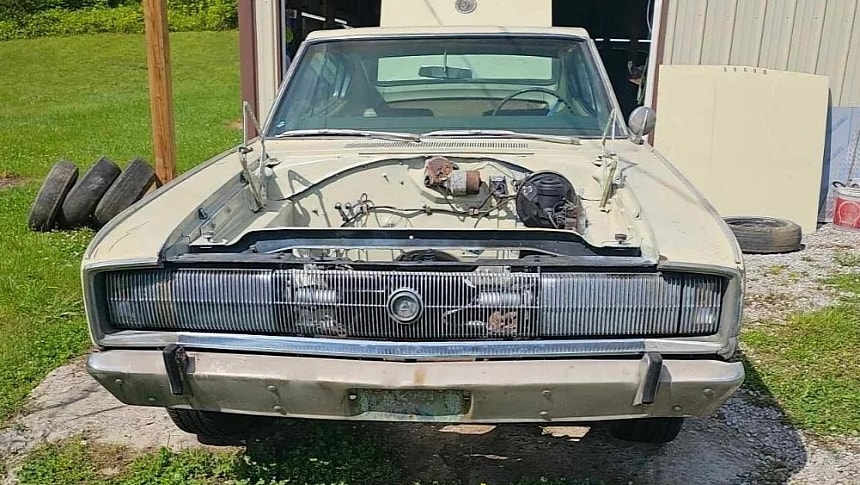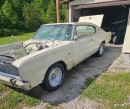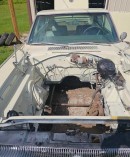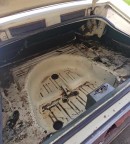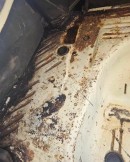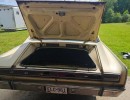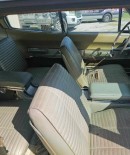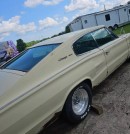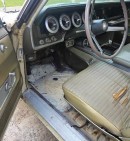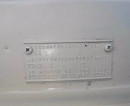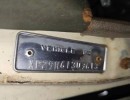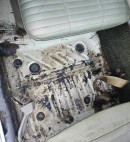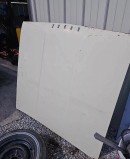Introduced in 1966, the Dodge Charger was the company's fanciest midsize offering. Loaded with premium features and sporting a four-seat layout, it was a big step up from the Coronet it was based on. That changed in 1968 when Dodge dropped the posh interior and went with a sportier exterior design.
But even though it was designed to compete against the AMC Marlin, the fastback-styled Charger was a fully-fledged muscle car when equipped with the proper engine. The options list included not only the 383- and 440-cubic-inch (6.3- and 7.2-liter) big-block V8s but also the then-new 426-cubic-inch (7.0-liter) HEMI. The latter turned the Charger into a 425-horsepower beast.
Like most HEMI-equipped cars, the 426-powered first-gen Charger is a rather scarce classic. Of the 37,344 examples sold in 1966, only 468 were fitted with the mighty HEMI. Likewise, when sales dropped to 15,788 Chargers in 1967, HEMI deliveries slumped to only 117 examples. The weathered fastback you see here is one of those 468 HEMI Chargers produced in the first year.
Unearthed in London, Kentucky, this Charger looks like it has been sitting for a very long time. The paint has lost its shine, and the lower body panels have rust. The interior is in better shape, although the seats have some wear and tear. The missing carpets reveal the floor panels aren't rusty, which is great news.
There's no info on how long this Charger had been sitting, but the owner says it's an all-original example with factory paint. If that's true, then this Charger is one of the few unrestored survivors still out there. However, the fastback is missing a couple of key components, both of which are extremely important given the "HEMI" badge.
Unfortunately, the 426 HEMI has been removed from the car, and its whereabouts are unknown. The three-speed automatic is also missing, so this HEMI Charger is pretty much a rolling shell. But the VIN confirms it's indeed a true-blue HEMI vehicle and one of only 218 equipped with the automatic transmission. It's one of those rare cars I hate seeing sitting on the side of the road.
Is this Charger worth restoring? I'd say yes! It has a nice color combo, it's an authentic H-code rig, and rust doesn't appear to be a huge problem. The undercarriage, on the other hand, will need a proper inspection before a final conclusion is drawn.
Sure, the missing HEMI is a bit of a problem, but period-correct 426 V8s aren't impossible to find. Chrysler sold most HEMI vehicles in 1966. Yes, it will be a costly venture, but it's the option that would bring the most value into this rolling shell. The fact that it's sold at no reserve with bidding starting from $5,000 is also encouraging. For reference, restored and highly original 1966 Chargers can cost as much as $150,000 nowadays.
Like most HEMI-equipped cars, the 426-powered first-gen Charger is a rather scarce classic. Of the 37,344 examples sold in 1966, only 468 were fitted with the mighty HEMI. Likewise, when sales dropped to 15,788 Chargers in 1967, HEMI deliveries slumped to only 117 examples. The weathered fastback you see here is one of those 468 HEMI Chargers produced in the first year.
Unearthed in London, Kentucky, this Charger looks like it has been sitting for a very long time. The paint has lost its shine, and the lower body panels have rust. The interior is in better shape, although the seats have some wear and tear. The missing carpets reveal the floor panels aren't rusty, which is great news.
There's no info on how long this Charger had been sitting, but the owner says it's an all-original example with factory paint. If that's true, then this Charger is one of the few unrestored survivors still out there. However, the fastback is missing a couple of key components, both of which are extremely important given the "HEMI" badge.
Unfortunately, the 426 HEMI has been removed from the car, and its whereabouts are unknown. The three-speed automatic is also missing, so this HEMI Charger is pretty much a rolling shell. But the VIN confirms it's indeed a true-blue HEMI vehicle and one of only 218 equipped with the automatic transmission. It's one of those rare cars I hate seeing sitting on the side of the road.
Is this Charger worth restoring? I'd say yes! It has a nice color combo, it's an authentic H-code rig, and rust doesn't appear to be a huge problem. The undercarriage, on the other hand, will need a proper inspection before a final conclusion is drawn.
Sure, the missing HEMI is a bit of a problem, but period-correct 426 V8s aren't impossible to find. Chrysler sold most HEMI vehicles in 1966. Yes, it will be a costly venture, but it's the option that would bring the most value into this rolling shell. The fact that it's sold at no reserve with bidding starting from $5,000 is also encouraging. For reference, restored and highly original 1966 Chargers can cost as much as $150,000 nowadays.
